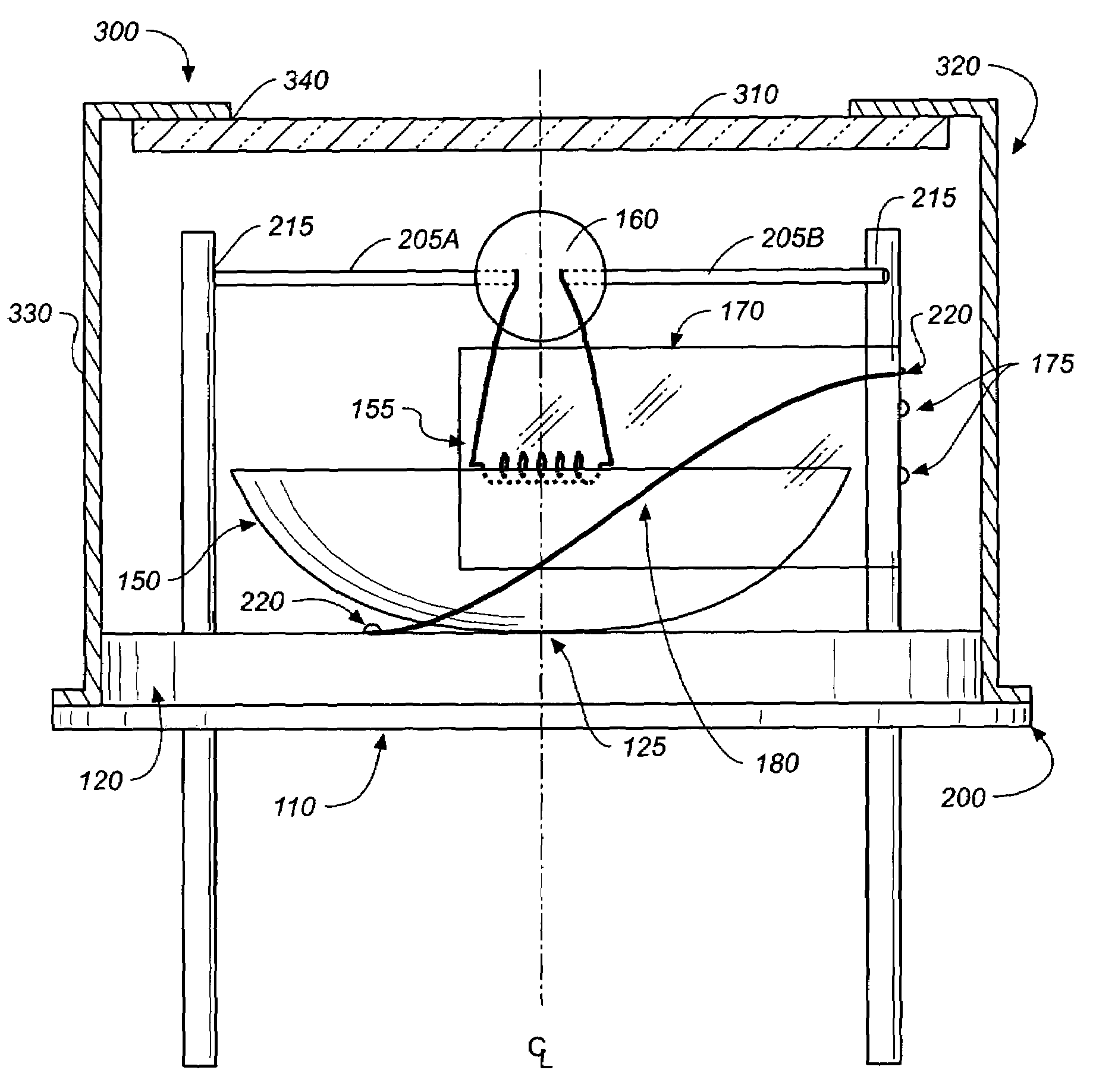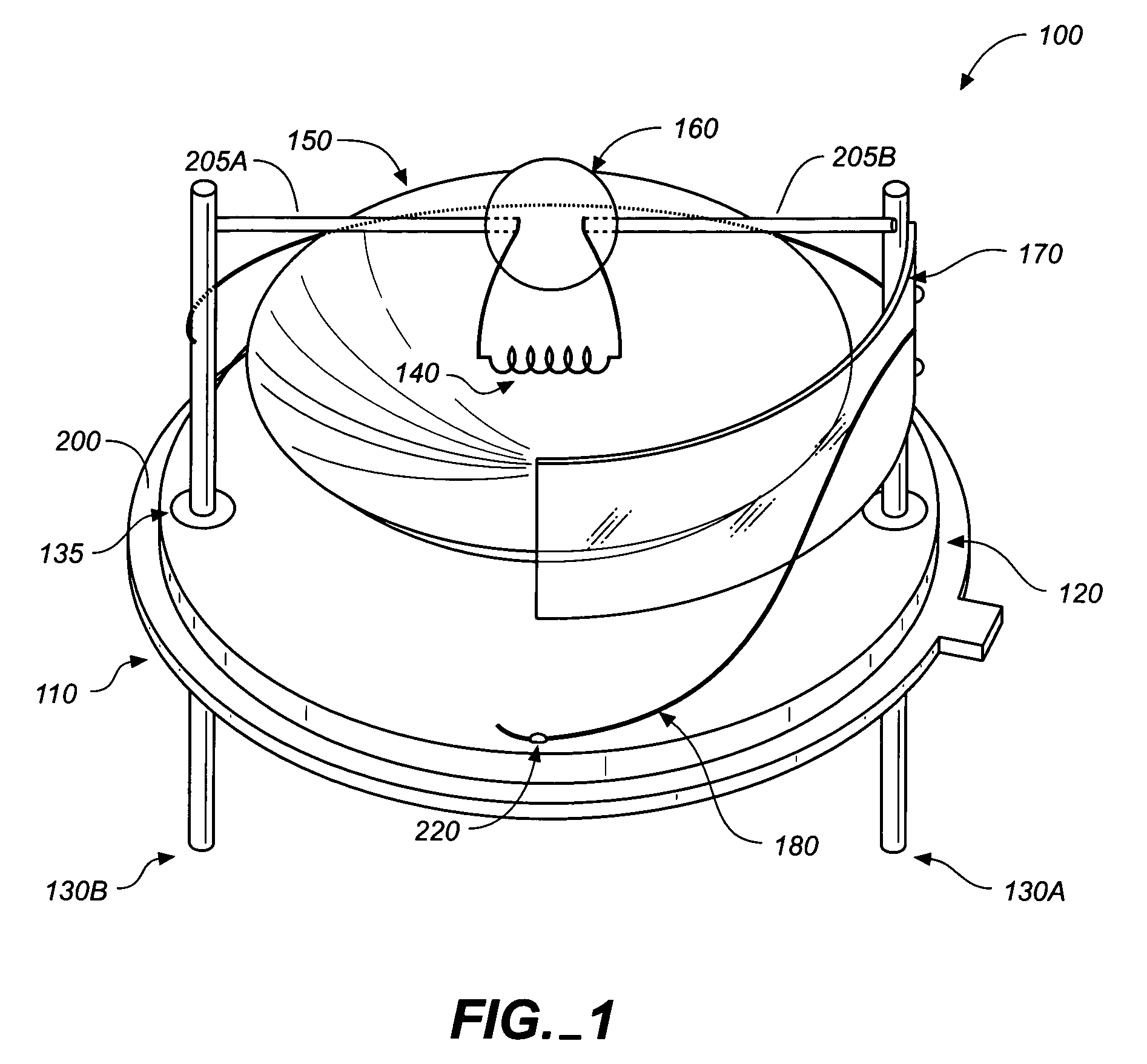Infrared radiation emitter
a radiation emitter and infrared technology, applied in the field of infrared radiation sources, can solve the problems of fragile and easily broken indium seals, limited power of sources, and extremely short life span of nicrs, so as to improve the appreciation of present contributions to the ar
- Summary
- Abstract
- Description
- Claims
- Application Information
AI Technical Summary
Benefits of technology
Problems solved by technology
Method used
Image
Examples
embodiment 100
[0081]FIGS. 1–3 illustrate a first preferred embodiment 100 of the infrared radiation emitter. This embodiment is primarily for use with a pulsable source as it includes delicate tungsten filaments with leads stabilized in a glass bead. These views show that the inventive apparatus includes an industrial standard TO-8 or similar header 110 having a base 120 with first and second electrical input (feed-through) pins 130A, 130B, or simply input pins. The input pins pass through glass seals 135 in the base. The input pins supply electrical current through leads and to a fine looped or coiled tungsten filament 140 suspended above a gold-plated reflecter150 at the reflector's focal point 155 by a glass bead filament support 160. An oxygen getter strip170 and a fine NiCr wire 180 are also disposed on the base, and these elements, along with the tungsten wire, are all covered with a sapphire, calcium fluoride, or zinc selenide (ZnSe) cap and window assembly 300, resistance welded to the ba...
embodiment 700
[0097]FIG. 6 shows a third preferred embodiment 700 of the improved infrared radiation emission source of the present invention. This embodiment is primarily for higher power steady state sources containing larger tungsten filaments and employs a different configuration for mounting the tungsten filament coil 710 to the electrical input (feed-through) pins 720, 730, on the header 740. Again, cross bars 750, 760, preferably fabricated from molybdenum, are welded to the input pins on the header in the manner described above. The tungsten filament is attached to the cross bars by compressing small molybdenum sleeves 770 around the ends of the tungsten lead wires so that it makes a tight mechanical connection; then the compressed sleeves are welded to the cross bars. The filament coil 710 is positioned directly below the cross bars at the focal point 780 of the reflector 790. Again, the getter 800 is welded to one of the input pins. Other orientations of the coil and cross bars are poss...
PUM
| Property | Measurement | Unit |
|---|---|---|
| wavelength | aaaaa | aaaaa |
| wavelength | aaaaa | aaaaa |
| wavelength | aaaaa | aaaaa |
Abstract
Description
Claims
Application Information
 Login to View More
Login to View More - R&D
- Intellectual Property
- Life Sciences
- Materials
- Tech Scout
- Unparalleled Data Quality
- Higher Quality Content
- 60% Fewer Hallucinations
Browse by: Latest US Patents, China's latest patents, Technical Efficacy Thesaurus, Application Domain, Technology Topic, Popular Technical Reports.
© 2025 PatSnap. All rights reserved.Legal|Privacy policy|Modern Slavery Act Transparency Statement|Sitemap|About US| Contact US: help@patsnap.com



